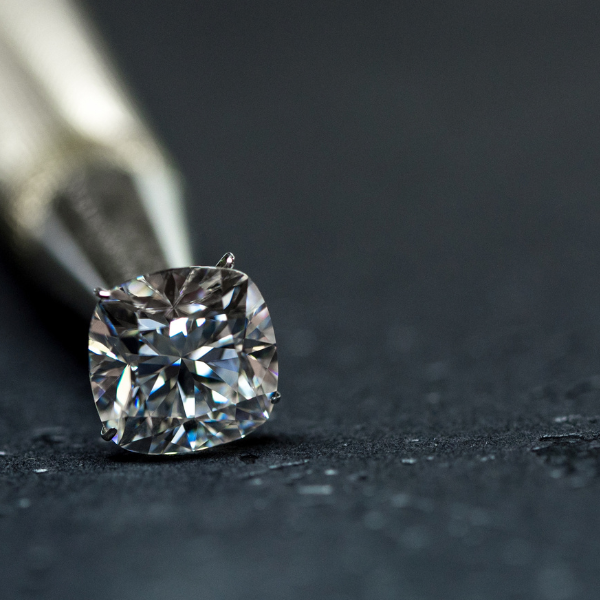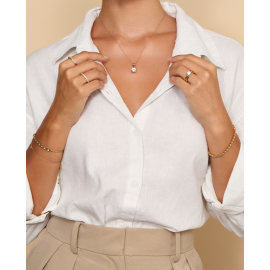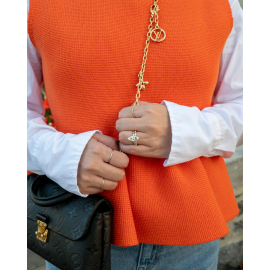Price match guarantee

We’ve teamed up with Klarna to provide flexible payment options, allowing you to shop the way you want. With Klarna, you can split your payment into 3 instalments or choose to pay later, making your shopping experience smoother and more convenient. Your order total must be between £100 and £499 to qualify.

We’ve teamed up with Klarna to provide flexible payment options, allowing you to shop the way you want. With Klarna, you can split your payment into 3 instalments or choose to pay later, making your shopping experience smoother and more convenient. Your order total must be between £100 and £499 to qualify.

October 21, 2022 | by Admin
It is law within the UK that every item of precious metal sold such as Platinum, Gold, Silver is stamped labelling the item with the type of metal it is. Platinum pieces which weigh less than 0.5 grams, 18ct Gold and Palladium pieces weighing less than 1.0 gram and Silver pieces weighing less than 7.78 grams are except from hallmark.
At Diamonds Factory all our products are hallmarked as per UK hallmarking law from London Assay Office (The GoldSmith Company)
The Goldsmiths' Company Assay Office is the oldest assay office in the United Kingdom. It has provided hallmarking services since The Goldsmiths' Company was founded in the 1300s. The company received its royal charter in 1327 and ranks 5th in order of precedence of the 12 Great Livery Companies of the City of London.
Hallmarking dates back to the 1300s when Edward I of England passed a law requiring any item made of silver, which was offered for sale, to be at least of equal quality as that of the coin of the realm (silver currency). The wardens of The Goldsmiths' Company were tasked with visiting workshops in the City of London to assay (test) silver articles. If these articles were found to be below standard they were originally destroyed and the metal forfeited to the King. If they passed, each article received the King's mark of authentication - the mark of a leopard's head. By 1478, there were several hundred workshops and merchants manufacturing silver articles in the City of London. It was not possible for the wardens to visit them all so the merchants were ordered to bring their items to Goldsmiths' Hall for testing and marking and a permanent Assay Office was established in the building. This is the origin of the term hallmark - struck with the King's mark at Goldsmiths' Hall.
In 1544 the Goldsmith's Company adopted the King's mark as their town mark and the mark of the leopard's head is now internationally recognised as the mark of this assay office.
The Goldsmiths's Company Assay Office is still based at Goldsmiths's Hall and remains the oldest company in Britain to be continually trading from the same site. However, it also has two satellite offices; at Greville Street in Hatton Garden in the heart of the London jewellery quarter and within a high security complex near London's Heathrow airport. It now has a new off-site facility within the Dalston-based jewellery manufacturer, Allied Gold. This is the first time in the Assay Office's 700 year history that it has opened permanent hallmarking services on a customer's premises.
In addition to hallmarking, the office has now expanded its range of services to support the jewellery trade and enforcement authorities. It offers a variety of specialist analytical services including nickel, lead & cadmium testing, antique silver dating, non-destructive compositional analysis, plating thickness measurement and a melt and assay service for scrap precious metal carried out in their fully independent on-site laboratory. Other services offered are a jewellery valuation service, laser marking, trading standards assistance, high quality photography and a comprehensive range of training and educational seminars, lectures and specialist events.






If you’ve been looking for an alternative to a diamond, whether it's for a ring, a necklace or even some earrings, you may have come across the moissanite gemstone. Recently, moissanite jewellery has soared in popularity and has become the gemstone of choice amongst the younger generation to give to their loved ones.
However, despite its rise, many are still confused over what a moissanite gemstone actually is and the meaning behind it. Luckily, we’ve created this guide to help you understand what a moissanite gem means and where it came from, so you’ll know everything there is to know before you buy!
What is Moissanite?
Moissanite is very often mistaken as a diamond simulant, however, it’s actually a gemstone in its own right that has its own hardness rating, sparkles differently and has a different chemical makeup. While it may appear to look like a diamond, which is why so many are choosing to use moissanite for engagement rings, it is, in fact, very different.
Made from silicon carbide, moissanite is a very rare mineral that’s one of the hardest gemstones around, scoring a 9.25 on the Mohs hardness scale, whereas a diamond scores a 10. This means it’s a highly durable gem, ideal to use in rings and be worn every day without worrying about scratches or damage. It can also withstand high pressure and high temperatures and, since it's man-made, can be easily cut in any size or shape you want, so there’s much more flexibility to create your dream piece of jewellery with moissanite.
Known for its colourless brilliance and fire, moissanite is a beautiful stone that’s a more sustainable choice than a diamond since no mining is needed to create it.
The History of Moissanite
Moissanite was first discovered in 1893 by Noble Prize-winning French scientist Henri Moissan in a meteor crater in Arizona. Initially, he believed he had found more diamond, but after testing it in a lab and discovering it contained silicon carbide, he realised that it was a gem in its own right, and so the stone was named in his honour.
For years after his discovery, and through the remainder of his life, Moissan tried to recreate his discovery within a lab since natural moissanite was sparse. Sadly, he didn’t succeed, but, in the late 1990s, researchers in North Carolina developed a process which created pure silicon carbide. This was then used to make products such as LED lighting, drilling tools and, of course, jewellery.
Because naturally occurring moissanite is extremely rare and only found in upper mantle rocks and meteorites, hence why it’s often referred to as a ‘space diamond’ or ‘stardust’, it’s impossible to use within jewellery. So, the moissanite jewellery you see on the market today is all lab-created.
What Does Moissanite Mean?
The meaning of moissanite can vary between cultures and people. While the significance of the stone may mean something to you, it could mean something entirely different to someone else. For example, if you received a moissanite engagement ring, it will have a hugely sentimental meaning to you.
However, saying that, there are some meanings that people associate moissanite with, including:
Love
As mentioned, moissanite is a popular alternative to diamonds since it’s more sustainable and oftentimes more affordable, so it’s used a lot for engagement rings. This gives the stone a romantic connotation and a meaning of love. As it’s one of the hardest gemstones, it represents a strong, unbreakable bond between two people.
Wellness
Again, because of the strength of the stone, many people associate moissanite with health and wellness, too. It can be a comfort to those who struggle with feelings of stress or anxiety, to wear such a hard and resilient gemstone. It’s also been linked to cleansing and clarity as well as the ability to centre yourself.
Spirituality
For many, moissanite also has a strong spiritual significance. As the gemstone was originally found inside a meteor crater, people believe that the stone is a treasure from space and, therefore, helps to create a stronger connection with the universe.
The Different Types of Moissanite Jewellery
Moissanite can be used in any type of jewellery and can be made into a wide range of styles from subtle and sophisticated to loud and extravagant. Known for having an intense sparkle, it's the perfect gemstone to wear when you want to add some extra glamour to an outfit.
Moissanite stud earrings
Moissanite stud earrings offer a similar appearance to diamond studs and will dazzle just as brightly if you’re looking for something simple and classy that can be worn either every day or for a special occasion. Moissanite drop earrings are also an excellent choice that will certainly be eye-catching and is much more affordable than diamond drops.
Many have longed to own a stunning diamond tennis bracelet, and moissanite tennis bracelets are just as beautiful. Adding plenty of sparkle to the wrist, moissanite tennis bracelets are ideal to wear for weddings or other formal events.
Moissanite pendants and necklaces
Moissanite pendants and necklaces are also available in a huge variety of designs to suit your personal style. Whether it’s something small and simple or unique, moissanite is an extremely versatile stone and can even be custom-made to a shape, size and style that you prefer.
Moissanite Rings
Lastly, moissanite rings are the most popular piece of moissanite jewellery as the gem is often used as the centre stone for engagement rings. Modern, durable, beautiful, affordable and ethical, it’s no wonder why so many are opting for a moissanite ring. This gemstone is also suitable for any type of setting and works well with any metal colour, so you have plenty of options available to choose your perfect ring.
Moissanite vs. Diamond: Which is Right for Me?
If you still can’t decide between moissanite or a diamond piece of jewellery, read our guide on the differences between diamonds and moissanite for more information to help you choose.
4 Prong Setting Round Moissanite Side Stone Engagement Ring
From £731
4 Prong Setting Round Moissanite Side Stone Engagement Ring
From £941
4 Prong Setting Round Moissanite Side Stone Engagement Ring
From £840
4 Prong Setting Round Moissanite Side Stone Engagement Ring
From £1,039